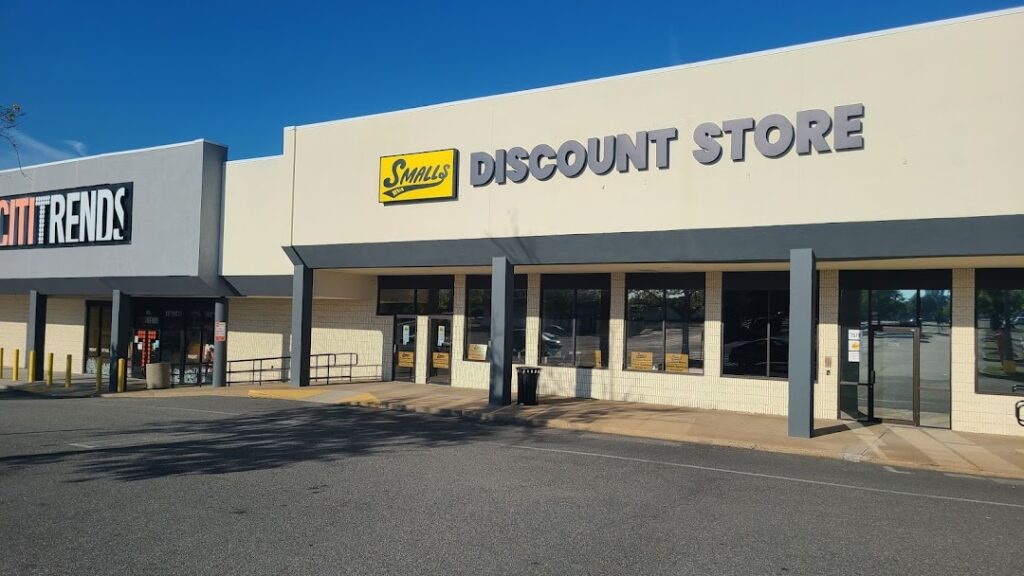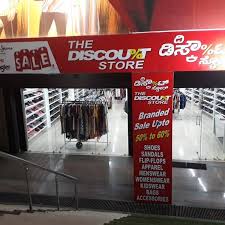Discount Store

What Is a Discount Store?
Discount stores have gained popularity among both retailers and customers due, to their ability to offer a range of products at discounted prices. These stores are an option for budget individuals who want to save money without compromising on the quality of goods they purchase.
What sets discount stores apart is their focus on selling branded merchandise and sourcing inventory from retailers. They also put effort into designing store layouts that attract shoppers.
When you step into a discount store you’ll discover a variety of products at prices lower than those found in traditional department stores. They specialize in consumer goods like shoes, clothing and electronics. Interestingly some discount store chains even have a niche focus. Exclusively sell one type of item. This combination of variety and affordability makes these stores an appealing choice, for consumers.
Advantages of a Discount Store
One advantage enjoyed by discount retailers is their ability to directly purchase quantities from manufacturers. This enables them to save on shipping and handling fees while also allowing them to secure discounts by buying items during the off season. Additionally discount stores stock an array of merchandise including food and household supplies.
To sum it up discount stores provide a win win situation, for both retailers and customers. They offer a variety of products at prices allowing people to save money without compromising on quality. In the 1990s several retailers specializing in discounted items transformed themselves into supercenters like Meijer, which expanded their offerings to include groceries and general merchandise. This move helped them increase profitability and outpace supermarkets and neighborhood stores in terms of growth.
In response to the changing needs of todays shoppers discounters have made strides in improving the quality of their brand products and introducing designs. They have also experimented with formats to cater to diverse consumer preferences. A great example of this is Macys Backstage, a subsidiary that provides a shopping experience with discounted prices. This shows how adaptable discounters have become over the years. Research by the Boston Consulting Group indicates that discounters experienced growth between 2000 and 2015 while traditional supermarkets and department stores faced declines.
Discount stores are destinations for shoppers looking for high quality items, at prices. They offer a range of products including clothing, home furnishings and everyday essentials.
Discount stores have become popular because they allow customers to shop without needing assistance, from salespeople. These stores carry items that are not easily found elsewhere. They offer discounts and special promotions to help customers save time and money. Major discount retailers focus on how they present their products and organize their stores often using the internet to engage with consumers. Some even have loyalty programs in place to provide savings or rewards.
Key Factors
The key factor that sets discount stores apart is their pricing strategy, which’s crucial to their success. They purchase products from manufacturers at prices allowing them to reduce margins. Some discount retailers specialize in categories like furniture (such as IKEA) or office supplies (like Staples) while others operate supercenters” that combine groceries and general merchandise.
While traditional department stores have faced challenges in years discount stores continue to thrive. Their unique business models and deep understanding of their target audience have helped them remain strong despite competition, from retail.
They continually adapt by exploring ideas, such, as eliminating cashiers or providing media content. Some even expand physically by opening locations like Macys Backstage or Sears Essentials, which focus on offering discounted products.
Convenience Matters
One of the benefits of discount stores is their convenience factor. They serve as a one stop shop where customers can easily find a range of products from different brands all in one place. However for those who’re new to shopping at these stores it can be a little challenging to navigate and locate items. Discount stores tend to get crowded with people making it harder to move around and deal with the crowds. This can leave customers feeling frustrated and drained of energy.
Many discount retailers buy products in bulk directly from manufacturers enabling them to offer these items at prices compared to their competitors. Additionally they often take advantage of off season purchases to secure savings that they pass on to their customers.
Typically these companies specialize in selling goods, like clothing and home items. Some may also carry furniture or electronics. Many even provide home delivery services. Retail discount chains have become popular as people look for ways to save both time and money by shopping in one location.
Discount stores are undergoing transformations with a focus, on enhancing the customer experience and leveraging data. Some of these stores are even exploring cashierless systems to digitize their operations and attract shoppers who enjoy spending time browsing in store. These initiatives also enable discount grocers to offer a range of label products.
Discount stores have always been popular due to their ability to provide a selection of discounted goods within an inviting shopping environment.
Keeping Up with Trends
Furthermore discount stores quickly adapt to fashion trends making it possible for customers to find clothing options without straining their budgets! Additionally these stores serve as one stop destinations for household items such, as preserved foods, electronics, clothing and everyday necessities.
The growth of discount retailers has been fueled by the challenges posed by increasing inflation. As inflation threatens consumer savings and retirement funds many individuals turn to discount stores for their grocery and household needs. This trend has been further intensified by the Federal Reserves policy of raising interest rates pushing consumers towards an path that risks bankruptcy.
As a result more and more shoppers are gravitating towards discount stores.Many retailers who previously did not offer discounts have changed their business models to adapt to the rise of discount stores. For example Macys introduced Backstage as a department store specifically catering to fashion bargain hunters. They focus on offering items, in each department while operating with profit margins.
Some discount stores specialize in merchandise categories like furniture and office supplies. Others, such as IKEA and Home Depot are known for their prices and knowledgeable customer service. Ross and TJ Maxx also offer a selection of products at prices.
Discount retail is rapidly changing to meet the demands of shoppers who value variety and improved service. Retailers are actively updating their stores by making changes such as rearranging aisles improving lighting expanding product ranges with brands and enhancing the shopping experience through digital technology that focuses on customer oriented features.
One notable aspect of discount stores is that they do not typically employ salespeople. These retail establishments specialize in offering goods at prices compared to department stores for items. Some discount stores are part of chains while others operate independently providing discounted products like office supplies, shoes and electronics. Discount stores can be found in industrialized nations with the United States being particularly enthusiastic about this trend due to consumer goods shortages, after World War II.
In response, to the growing demand large retail companies have established discount divisions specifically tailored to meet customer needs.
These retail giants understand the importance of their store locations in attracting and engaging customers. As a result they have made investments to ensure that their stores offer a shopping experience with high quality products at prices. However despite these investments many discount retailers still face challenges due to competition.
Typically discount retailers operate outlets that offer a range of general merchandise. Some retailers specialize in product categories like jewelry or electronic equipment. Additionally there are distributors known as “killers” who offer goods such as major appliances or automotive supplies.
While customer service remains a priority for discount stores they have also started adapting their physical store environments to attract shoppers seeking a shopping experience. This shift is promising because it shows that discount retailers are going beyond offering prices; they are actively creating engaging and enjoyable shopping experiences for their customers. In the future it is likely that they will take measures to compete against retail giants, like Amazon and Alibaba.
Here a are a few blogs that may interest you!
1. Product Distributors – How to Work with Distributors!
2. How to Sell to Walmart and Become a Walmart Vendor
3. Packaging for Retail – What You Need to Know!

Step-by-step training on how to sell to major retailers
We explain exactly how to do that and how to get started today. I’ve taught tens of thousands of companies on how to get your products to the stores. And so we’re here to support you. Or please subscribe to our Youtube channel and or be on the lookout for additional training that we create.
We are here to expedite the process of making money with your physical products and that’s what we’re all about. Take a look at our advanced training, live events, certification programs and so much more.
In this training, I will discuss some of the things to think about when approaching a retailer to sell your products and become a vendor. Hope it helps! 🙂
Karen Waksman,
Retail MBA
Questions? Contact Us!
1-855-Retail-2 (Call or Text)
Email: info@retailmba.com
Retail MBA provides a step-by-step formula on How to Sell to Major Retailers, Online Retailers, Smaller Retailers, Catalogs and More. No Experience Required! These solutions continue to convert for clients year-over-year! These are Time-Tested and Proven Strategies that we utilize ourselves when going after stores! Everything we teach, we test. Want access to these formulas? ANY one of our programs and coaching systems gives you access to them now. With that said…
Here are 4 Easy Ways to Work with Us:
1) Free Training – If You Would Like to Join Our Next FREE Webinar Training Called “Retail Chain Store Secrets – How to Sell to Major Retail Chains. No Experience Required” Then Sign Up NOW To Learn All About Selling into Retail Chains By Clicking Here! https://www.retailmba.com
2) Masterclass Intensives – Want to Join our Next 4 Week Elite Retail MBA Masterclass Intensive? These Intensives Are EPIC for people who Love Fast Paced Learning – Homework, Retail Coaching, Developing Your Strategy, Buyers Contacts and More! These Events Are Held Every Quarter. Join us by Clicking Here: https://www.retailmbabrands.com/masterclass
3) Done-for-You Program – If You Want Karen Waksman and Her Team to Reach Out to Your Top Dream Retail Chains On Your Behalf – And You Have a Retail-Ready Product, Check Out our Epic Done-For-You Service by Clicking Here: https://www.retailmbabrands.com/done
4) In Person Events – If You Want to Learn LIVE and Meet Karen Waksman in Person at Our Next Retail Sellers LIVE Event with Other Like-Minded Individuals in Beautiful San Diego, CA!
We Would LOVE to Have You Join Us by Clicking Here: https://www.americasnextretailproduct.com
Thanks so much.
And…if you like this training, you will love these new short training sessions as well! Click on the links provided to watch and grow your consumer product business TODAY!


